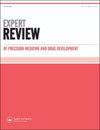未来展望:精准医学提高急性髓性白血病同种异体干细胞移植的治疗效果
IF 1.2
Q4 PHARMACOLOGY & PHARMACY
Expert Review of Precision Medicine and Drug Development
Pub Date : 2021-03-11
DOI:10.1080/23808993.2021.1897464
引用次数: 1
摘要
急性粒细胞白血病(AML)是一种血液和骨髓恶性疾病,其特征是白血病母细胞增殖、缺乏细胞凋亡和分化受阻[1]。这些未成熟细胞损害了正常的骨髓功能,导致严重的骨髓衰竭,包括贫血、血小板减少和粒细胞减少[1]。这种疾病具有高度恶性和侵袭性的病程,如果不治疗,患者通常会在数周至数月内死亡。除了早幼粒细胞性AML外,长期治愈的唯一可能性是强化化疗,以及在高危患者中联合异基因造血干细胞移植(allo-HSCT)[1,2]。Allo-HSCT是最有效的抗白血病治疗方法,它利用了来自免疫活性供体细胞的免疫介导的移植物抗白血病(GVL)效应。然而,同种异体造血干细胞移植与高度的发病率和死亡率有关,尤其是由于严重的移植物抗宿主病(GVHD)。此外,即使在移植后,疾病复发的发生仍然很普遍,尤其是对于在诊断时具有与不良预后相关的遗传标记的患者[2,3]。在下文中,我们将讨论allo-HSCT在AML治疗中的当前和未来方面,探讨基于精准医学优化治疗方法的可能性。本文章由计算机程序翻译,如有差异,请以英文原文为准。
Future perspective: precision medicine to improve treatment results in the settings of allogenic stem cell transplantation for acute myelogenous leukemia
Acute myelogenous leukemia (AML) is a malignant disease of the blood and bone marrow, characterized by proliferation, lack of apoptosis, and block in differentiation of leukemic blasts [1]. These immature cells compromise normal bone marrow function, resulting in severe bone marrow failure, with anemia, thrombocytopenia, and granulocytopenia [1]. The disease has a highly malignant and aggressive course, and without treatment the patients will usually die within weeks to months. Except for promyelocytic AML, the only possibility for a longtime cure is intensive chemotherapy, and in high-risk patients combined with allogenic hematopoietic stem cell transplantation (allo-HSCT) [1,2]. Allo-HSCT is the most potent antileukemic treatment, by utilization of the immune mediated graft versus leukemia (GVL) effect derived from immune competent donor cells. However, alloHSCT is associated with a high degree of morbidity and mortality, especially due to severe graft versus host disease (GVHD). Furthermore, the occurrence of relapse of the disease even after transplantation is still prevalent, especially for patients present with genetic markers associated with inferior prognosis at the time of diagnosis [2,3]. In the following, we will discuss the current and future aspects of allo-HSCT in the setting of AML, untangling the possibilities to optimize the treatment approaches based on precision medicine.
求助全文
通过发布文献求助,成功后即可免费获取论文全文。
去求助
来源期刊

Expert Review of Precision Medicine and Drug Development
PHARMACOLOGY & PHARMACY-
CiteScore
2.30
自引率
0.00%
发文量
9
期刊介绍:
Expert Review of Precision Medicine and Drug Development publishes primarily review articles covering the development and clinical application of medicine to be used in a personalized therapy setting; in addition, the journal also publishes original research and commentary-style articles. In an era where medicine is recognizing that a one-size-fits-all approach is not always appropriate, it has become necessary to identify patients responsive to treatments and treat patient populations using a tailored approach. Areas covered include: Development and application of drugs targeted to specific genotypes and populations, as well as advanced diagnostic technologies and significant biomarkers that aid in this. Clinical trials and case studies within personalized therapy and drug development. Screening, prediction and prevention of disease, prediction of adverse events, treatment monitoring, effects of metabolomics and microbiomics on treatment. Secondary population research, genome-wide association studies, disease–gene association studies, personal genome technologies. Ethical and cost–benefit issues, the impact to healthcare and business infrastructure, and regulatory issues.
 求助内容:
求助内容: 应助结果提醒方式:
应助结果提醒方式:


